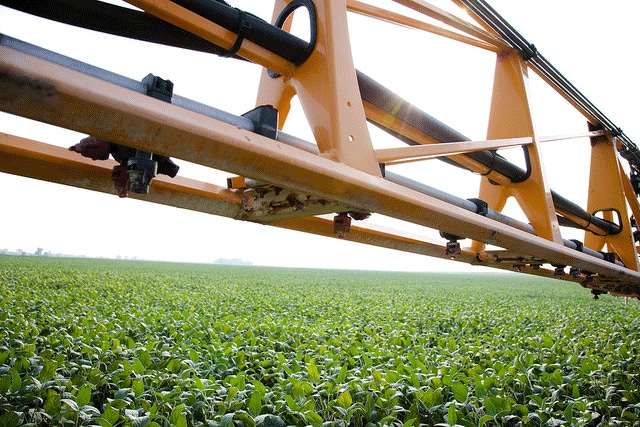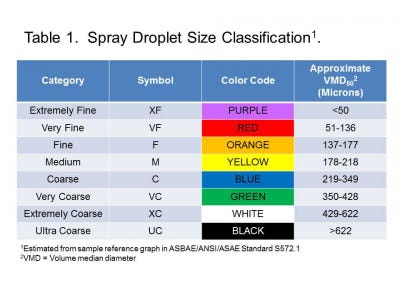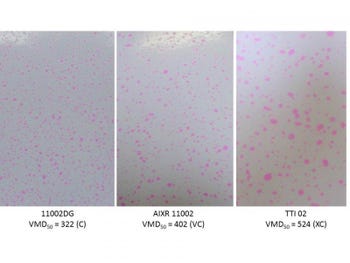
Your droplet size matters now in a big way
Be prepared to change nozzles when using herbicides in the new auxin technology systems. However, do not be lulled into a false sense of security by this. The use of spray nozzles that result in larger droplets is only one of numerous tactics needed to minimize off-target movement
February 22, 2016

Access in the Southeast to both the 2,4-D and dicamba soybean technologies (seed + herbicides) is coming eventually. Without question, growers who are interested in using these technologies will have to become better stewards of pesticide applications.
One of the stewardship changes that will be required with these technologies is the use of specific nozzles designed to produce less physical drift (i.e. larger droplets). Consequently, a better understanding of droplet size will be necessary.
Since droplets are rather small, it is critical to know how they are measured. Droplet size is measured in microns. A micron is equivalent to 1/25,000th of an inch. For comparison, the average diameter of a human hair is 100 microns. The average diameter of a paper clip is 850 microns. When talking about drift reduction of herbicides, it is important to know that spray droplets that are less than 150 microns are those most likely to drift onto your neighbor’s sensitive crops or Grandma’s tomatoes.
The term volume median diameter, or VMD, is often the way that droplet sizes are categorized. VMD50 is the value (microns) where 50 percent of the total volume or mass of liquid sprayed is made up of droplets larger than this value and 50 percent is made up of droplets smaller than this value. Based upon VMD50, droplet sizes are classified accordingly (Table 1). Examples of various spray droplet sizes are presented in Figure 1.
Many herbicide applications made today are in the medium droplet size classification depending upon nozzle type and pressure. Auxin technologies will likely require nozzle tips and pressures that result in very coarse to ultra-coarse droplet sizes.

Spray pattern and VMD50 as influenced by nozzle type (15 GPA, 3.5 MPH, 20” boom height, 20” nozzle spacing, and 35-40 PSI).
Because spray coverage is reduced when droplet size increases, there is some concern about how this might influence performance. Efficacy with bigger drops is dependent on many factors including the herbicide (contact or systemic), weed species, and the environment. With bigger spray droplets, you might just have to expect slightly less control of some species as a trade-off for less off-target movement. You really do not have a choice because the labels will only allow a certain type of nozzle. A systems approach (tillage and/or cover crops + PRE + EPOST + POST + hand-weeding) should help minimize problems with performance inconsistencies caused by droplet size.
Since I am often scrutinized by nozzle manufacturers, you need to know that there is more than 1 dog in the hunt. ABJ Agri, Delevan, Greenleaf Technologies, Hypro, Lechler, TeeJet, and Wilger are a few companies who make/distribute agricultural spray nozzles. Since Enlist Duo is already registered in some states (not AL, FL, GA, or SC though), recommended nozzle tips are currently listed on that label. Specific nozzles will be recommended when the labels of Engenia, Roundup Xtend, and XtendiMax are finalized.
Be prepared to change nozzles when using herbicides in the new auxin technology systems. However, do not be lulled into a false sense of security by this. The use of spray nozzles that result in larger droplets is only one of numerous tactics needed to minimize off-target movement. As always, good weed hunting!
You May Also Like



